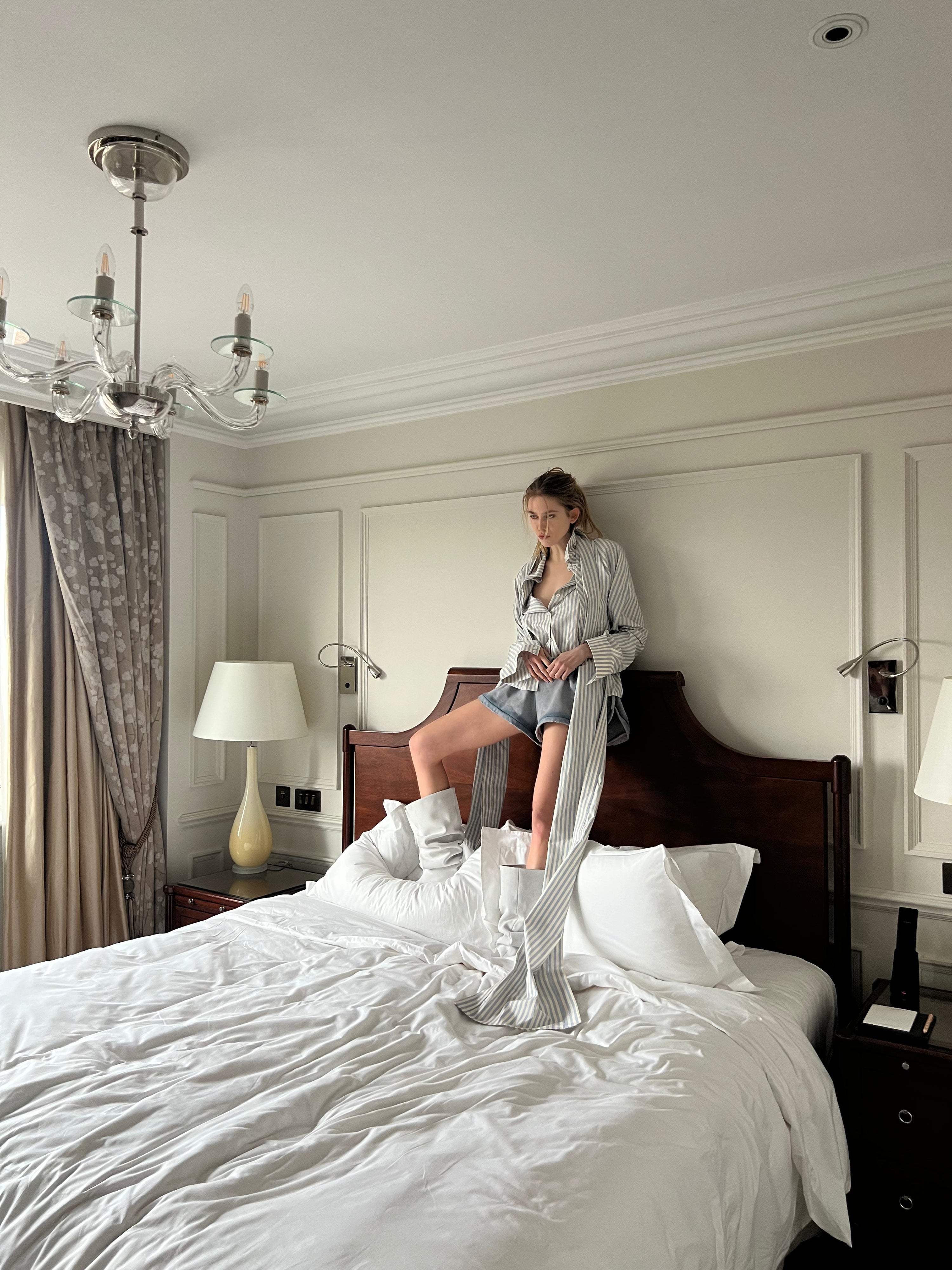
Masha Popova
PPS: Can you walk us through the inspiration behind your latest collection?
Masha: The AW25 Do Not Disturb collection explores the intimacy of unfiltered dressing—clothes caught mid-motion, slipping off shoulders, lived in rather than styled. Inspired by Sophie Calle’s The Hotel (1981), which documented the personal traces left behind by guests, the collection plays with voyeurism and ephemerality. This season, the collection is about movement, imperfection, and the quiet elegance of those who live in between places—never fully unpacked, always in transit.
PPS: Are there particular textures or materials you find yourself drawn to repeatedly, and what do they signify for you?
Masha: I’m always drawn to fabrics that can be transformed—plain, raw, or undyed materials that evolve through process. Denim, in particular, feels like a canvas; it carries history but can be pushed in so many new directions. I love working with textures that hold structure yet can be manipulated, distressed, or reimagined to tell a new story. For me, it’s always about transformation.
PPS: How has your heritage, along with your experiences in different cultural environments, influenced your design philosophy and artistic expression?
Masha: Growing up in Ukraine—first in an industrial town near a railway depot where my dad worked, then in the seaside city of Odesa—really shaped how I see fashion. With limited access to mainstream fashion, second-hand markets and mismatched styling were the norm, which made me love transformation and reinvention. Studying architecture before moving into fashion at CSM also influenced the way I work, giving me a more structural, process-driven approach that blends raw energy with craftsmanship.

PPS: What’s the one item in your bag you’re completely obsessed with and can’t leave the house without?
Masha: Noise cancelling headphones, I recently lost them and not having them makes life a little harder.
PPS: Can you share a pivotal moment in your journey that reshaped your understanding of yourself as a designer?
Masha: There have been a few key moments, but one that really reshaped how I see myself as a designer was my first visit to Tonello for denim research and development. I always approached design instinctively, but seeing the technical side of fabric manipulation made me realise that understanding the process doesn’t limit creativity—it expands it. It shifted my perspective from just imagining what I wanted to actually understanding how to make it happen. That moment confirmed that I’m not just drawn to aesthetics, but to the craftsmanship and innovation behind them. It made me see myself as a designer who builds from the ground up, pushing materials to become something new.

PPS: What would be your dream collaboration?
Masha: I think I could do a lot with a denim heritage brand. There’s so much potential in reimagining and transforming the archives, pushing them forward in a new way. Denim has such a strong identity, but it also holds endless possibilities for transformation, telling stories through fabrication—that’s what excites me. I’d love to explore how far it can be pushed while still keeping that connection to its roots.
PPS: What’s the greatest lie fashion has ever told?
Masha: That it’s all glamorous behind the scenes. In reality, it’s hard work—the glamour is in the presentation or the creations themselves. And another big myth is that you don’t need an education to be a designer. To be a good designer, you have to be technically knowledgeable, and it takes time to develop your own language. Of course, there are incredibly talented designers without a formal degree, but not having a degree doesn’t mean not learning. The craft, the process, and the technical side of design are just as important as creativity.

PPS: How would you describe your mission as a designer in a few words (ethically, sustainably, artistically or otherwise)?
Masha: To push the boundaries of fabrication and craftsmanship, transforming raw materials through process-driven design. Sustainability is embedded in my approach—working with deadstock, repurposing materials, and treating fabric as a canvas for endless reinvention. I want my work to feel both innovative and personal, balancing technical knowledge with an instinctive, expressive approach.
